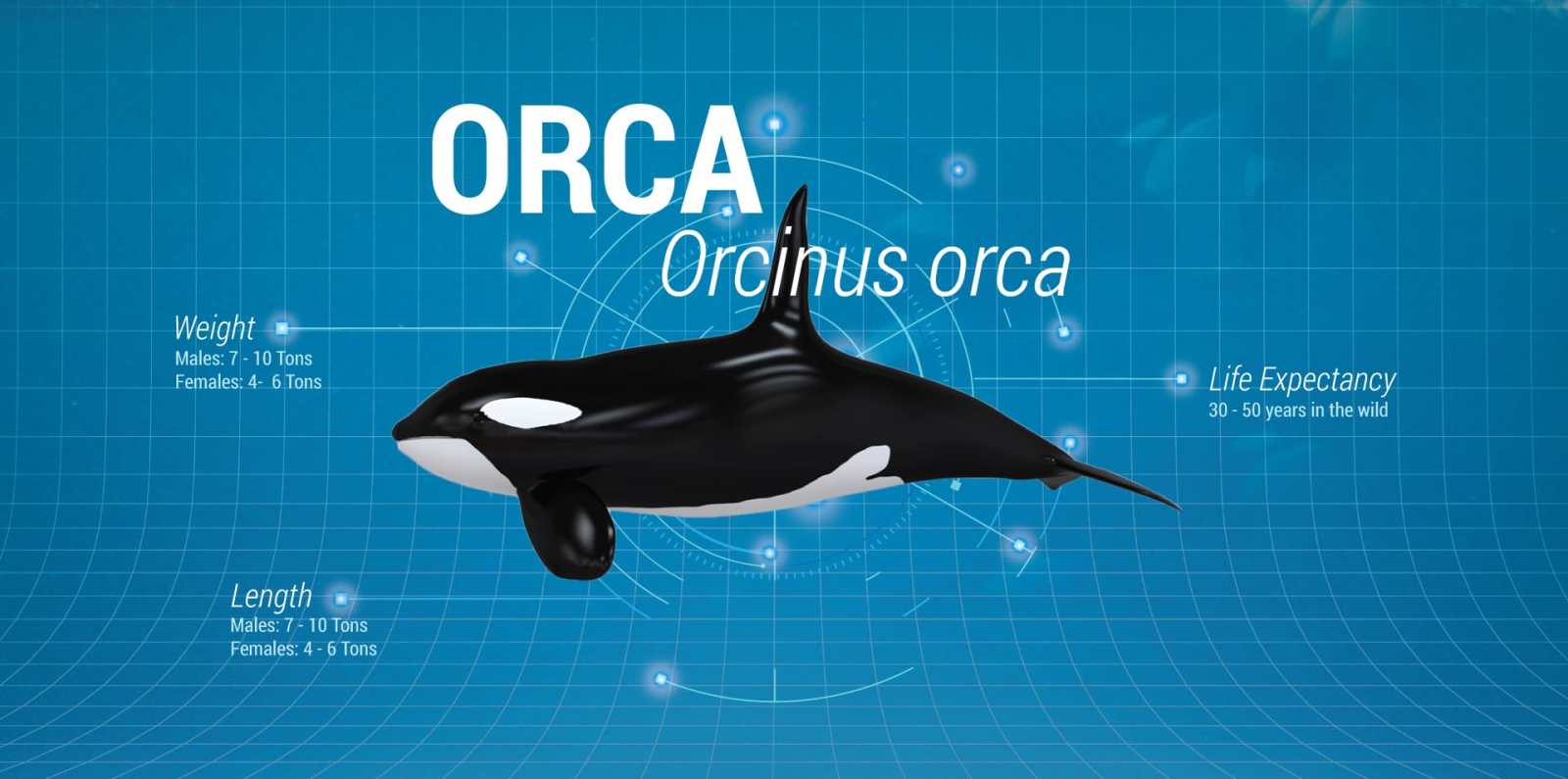ORCA


The killer whale, also known as orca, is one of the top marine predators. It is the largest member of the Delphinidae family, or oceanic dolphins. Found in every ocean in the world, they are the most widely distributed of all whales and dolphins. Scientific studies have revealed many different populations with several distinct ecotypes (or forms) of killer whales worldwide—some of which may be different species or subspecies. They are one of the most recognizable marine mammals, with their distinctive black and white bodies. Killer whales can adapt to almost any condition, and occur in both open seas and coastal waters.
PREY
Although the diet of killer whales depends to some extent on what is available where they live, it is primary determined by the culture (i.e., learned hunting tactics) for each ecotype of killer whale. For example, one ecotype of killer whales in the U.S. Pacific Northwest (called Residents) exclusively eats fish, mainly salmon, and another ecotype in the same area (Transients, or Bigg’s killer whales) primarily eats marine mammals and squid. Killer whales often use a coordinated hunting strategy and work as a team to catch prey. They are considered a top predator, eating near the top of the food chain.
PREDATORS
The Orca / killer whale is an apex predator and isn’t known to have any natural predators except for humans.
THREATS
Overfishing and habitat loss have decreased the amount of prey available to some killer whales. Without enough prey, killer whales might experience decreased reproductive rates and increased mortality rates. This threat is especially important for Southern Resident killer whales because some populations of their preferred prey, Chinook salmon, are also threatened or endangered. Contaminants enter ocean waters and sediments from many sources, such as wastewater treatment plants, sewer outfalls, and pesticide application. Once in the environment, these substances move up the food chain and accumulate in top predators.
(Information from NOAA Fisheries. fisheries.noaa.gov)
